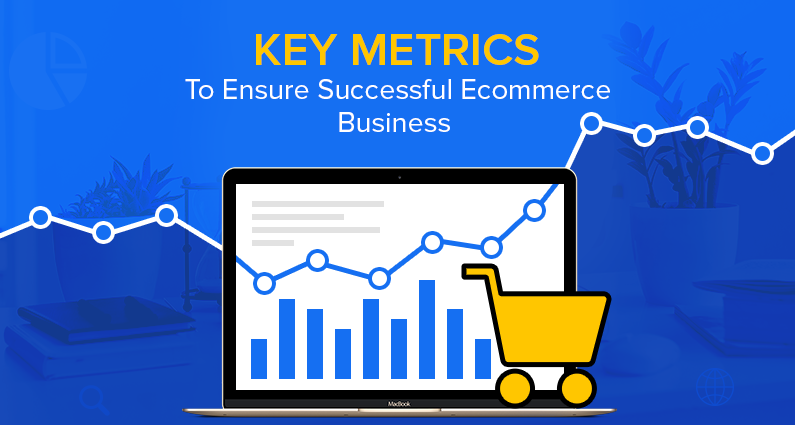Starting an ecommerce business and making sure it sustains the competition & the test of time are two completely different tasks.The former takes a whole lot of planning, vision and guts while the latter demands the same in a bigger dose. But there’s something else that you need to focus on too, and a lot of it has to do with basic maths.
The maths we are talking about here is about certain metrics that you need to monitor on a regular basis to know how well your business is doing. Calculations that are a vital for the sustenance and growth of your business, so, let’s begin.
COST OF ACQUIRING CUSTOMER (CAC)
This is the amount of money you spend to create a new customer for your website. In order to find your CAC for a particular period, just take the total marketing budget for that period and divide it by all the new customers acquired during that period. It is important to note that repeat customers should not be included in this metric. This metric will tell you how much it costs you to get a new customer.
How to Calculate: Your Monthly Marketing Budget / Number of New Customers Acquire in One Month.
CONVERSION RATE (CR)
This is the number of people who visited the website divided by number of people who converted. The conversion rate can be based on signups or even purchases. It is commonly used to find out the efficacy of a campaign.
How to Calculate: (Number of converted visitors/ Total number of visitor) x 100
SHOPPING CART ABANDONMENT (SCA)
If visitors put something in their shopping cart and exit the website without completing the purchase, such an event is known as shopping cart abandonment. It is a vital metric as more than 68% of online shoppers abandon their cart. This amounts to more than $4 trillion worth of abandoned merchandise. What is interesting is the fact that 63% of it is still recoverable if proper strategies to counter them are put in place. Visitors putting products in the cart means they had made their mind to make the purchase but something prompted them to not go ahead with the purchase.
How to Calculate: (Number of Successful Checkouts / No. of Checkouts Initiated) x 100
AVERAGE ORDER VALUE (AOV)
This is the average value of an order placed on a website at the time of checkout. To find the AOV you should divide the total revenue over a given period by number of orders placed during that same period. Ecommerce marketplaces have started to lay focus on increasing their AOV in order to attain profitability.
How to Calculate: Total Revenue / Total Number of Orders
Also Read: Tips to increase Average order value of your ecommerce store
CUSTOMER CHURN RATE (CCR)
If a user becomes your customer on your ecommerce website by making a purchase but does not come back for a certain period of time, then that user is considered to have “churned”. Such users are also known as one-time buyers. You can decrease your churn rate by sending occasional emails and offers to these users to make them buy from you again.
How to Calculate:[(Customers in the beginning of the month – Customers at the end of the month) / Customers in the beginning of the month] x 100
Note that negative churn rate is favorable as it means you’ve acquired more customers in the given time frame.
COST PER CLICK (CPC)
Social media has become one of the major platforms for an ecommerce website to reach out to its targeted audience. In order to accelerate its growth, ecommerce marketplaces often buy ads on these social media platform, from where they get substantial traffic. This is where CPC comes into play which is basically total cost of campaign divided by number of clicks.
How to Calculate: Total Cost of Campaign / Total Number of Clicks
REVENUE PER CLICK (RPC)
This is another metric associated with social media, where you deduce the revenue obtained from the campaign. It can be calculated by dividing total revenue from campaign and number of clicks. If your RPC is lower than your CPC, you can term your campaign as a failure.
How to Calculate: Total Revenue Generated from Campaign / Total Number of Clicks
COST OF SALE (COS)
It is also another metric to keep in mind when going for a campaign. It is the comparison of how much you spend and how much you make. For example: if you spend $50 to make $100 then your CoS is 50%. Higher the CoS lesser will be your profits.
How to Calculate: (Total Campaign Cost / Total Revenue) x 100
CUSTOMER LIFETIME VALUE (LTV)
Lifetime value of a customer is the average value a customer creates for you over a period of time. It is the multiplying average over value, number of repeat transaction during that period and average retention time.
How to Calculate: Average Order Value x No. of Repeat Transactions per Month x Average Retention Time in a Given Time Frame
AVERAGE PROFIT PER VISITOR (APPV)
This is the profit attained by an ecommerce website every time a user visits their website. This does not mean that every user will generate profit for the website. It is just the average profit accumulated by number of visitors over a period of time.
How to Calculate: Total Profit / Total Number of Visitors
PROFIT BY TRAFFIC SOURCES (PBTS)
Another aspect to keep in mind while analyzing traffic sources is the profit that is generated by each traffic source. This will give you an idea as to how much profit you are generating from social media, or organic search etc. To calculate PBTS, just subtract the revenue from advertising expense and divide it by total number of visitors.
How to Calculate: (Revenue – Traffic Expense) / Total Number of Visitors
PRODUCT REFUNDS (PR)
Although this metric is often overlooked, it holds immense importance as it affects the overall revenues of your ecommerce marketplace. In order to find the product refund rate, divide the total number of products sold by number of returns.
How to Calculate: (Number of Products Sold / Number of Products Returned) x 100
REPEAT PURCHASE RATE (RPR)
Repeat purchases are crucial to every ecommerce business as they remove the hassle of acquiring new customers.Meanwhile website owners can focus on increasing the AOV of the website.
How to Calculate: (No. of Repeat Customers / Total No. of Customers) x 100
CONCLUSION
Now that you know which metrics are crucial for your ecommerce website, you can start to monitor them regularly and make informed decisions that will allow you to expandyour ecommerce business. No need to push campaigns blindly or hoping that your website might generate substantial revenues. It all boils down to these metrics that can easily aid in moving your marketplace towards success.



